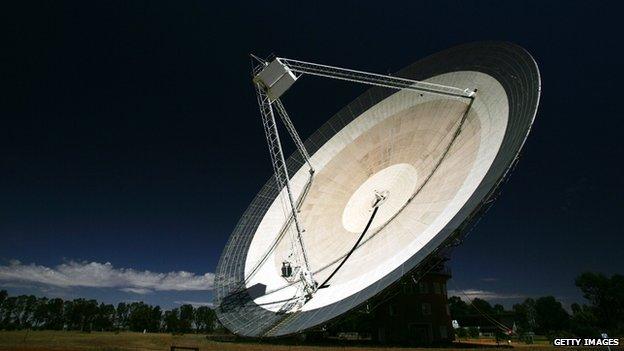Kitchen microwaves baffle Australian space scientists
- Published

The Parkes telescope was famously featured in the film "The Dish"
After 17 years of fruitlessly searching the galaxy, Australian scientists have discovered the source of mysterious radio signals hitting a telescope.
It turns out the source was their own kitchen microwaves.
PhD student Emily Petroff made the discovery at the Parkes telescope, after noticing that the signals were only received during business hours.
The rays, known as "perytons", were emitted when impatient staff opened the microwave door prematurely.
Although discovered in January the revelation has only come to light after Ms Petroff published her paper, "Identifying the source of perytons at the Parkes radio telescope.", external
She concluded that "tests revealed that peryton events can be generated under the right set of circumstances with on-site microwave ovens....and can account for bimodal DM distribution of the known perytons."
Or in layman's terms, as Ms Petroff told ABC News: "It turns out that you can generate these particular local signals by opening the door of the microwave to stop the microwave, and that produces these weird bursts that we're seeing at Parkes."
"It was kind of a surprise to all of us," she added.